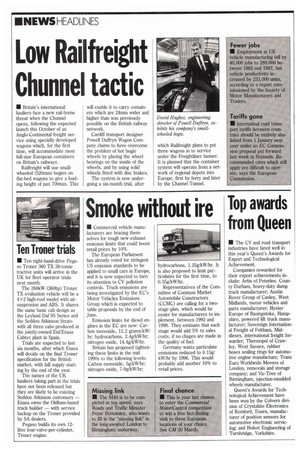Smoke without ire
Page 8

If you've noticed an error in this article please click here to report it so we can fix it.
• Commercial vehicle manufacturers are bracing themselves for tough new exhaust emission limits that could boost retail prices by 10%.
The European Parliament has already voted for stringent US emission standards to be applied to small cars in Europe, and it is now expected to turn its attention to CV pollution controls. Truck emissions are being investigated by the EC's Motor Vehicles Emissions Group which is expected to table proposals by the end of June.
Emission limits for diesel engines in the EC are now: Carbon monoxide, 11.2 grams/kW/ hr; hydrocarbons, 2.4g/kW/hr; nitrogen oxide, 14.4g/kW/hr.
Britain has proposed tightening these limits in the mid 1990s to the following levels: Carbon monoxide, 5g/kW/hr; nitrogen oxide, 7-9WkW/hr; hydrocarbons, 1.25g/kW/hr. It is also proposed to limit particulates for the first time, to 0.35g/kW/hr.
Representatives of the Committee of Common Market Automobile Constructors (CCMC) are calling for a twostage plan, which would be easier for manufacturers to implement, between 1992 and 1998. They estimate that each stage would add 5% to sales costs, if no chages are made in the quality of fuel.
Germany wants particulate emissions reduced to 0.15g/ kW/hr by 1996. This would probably add another 10% to retail prices.




















































































































































